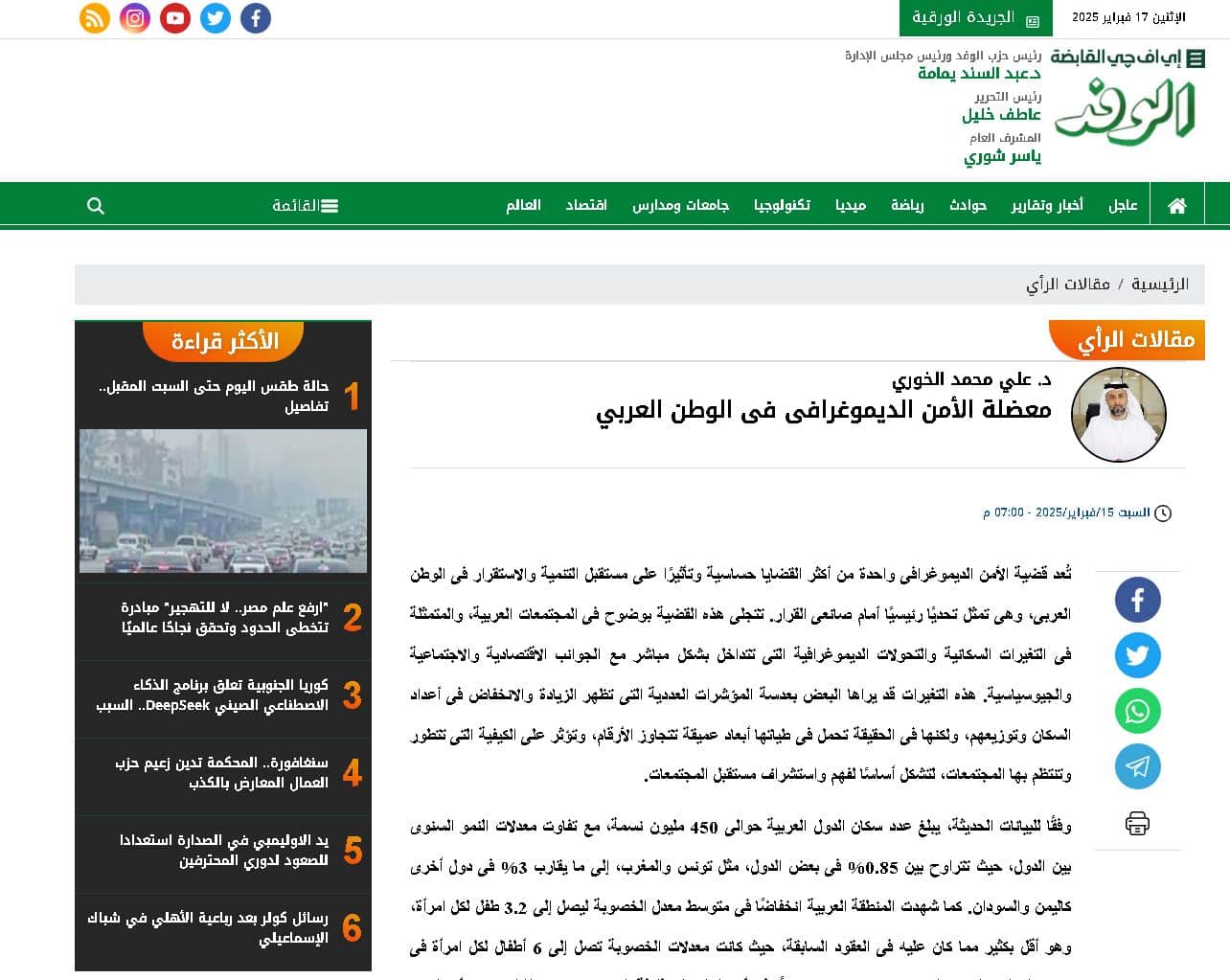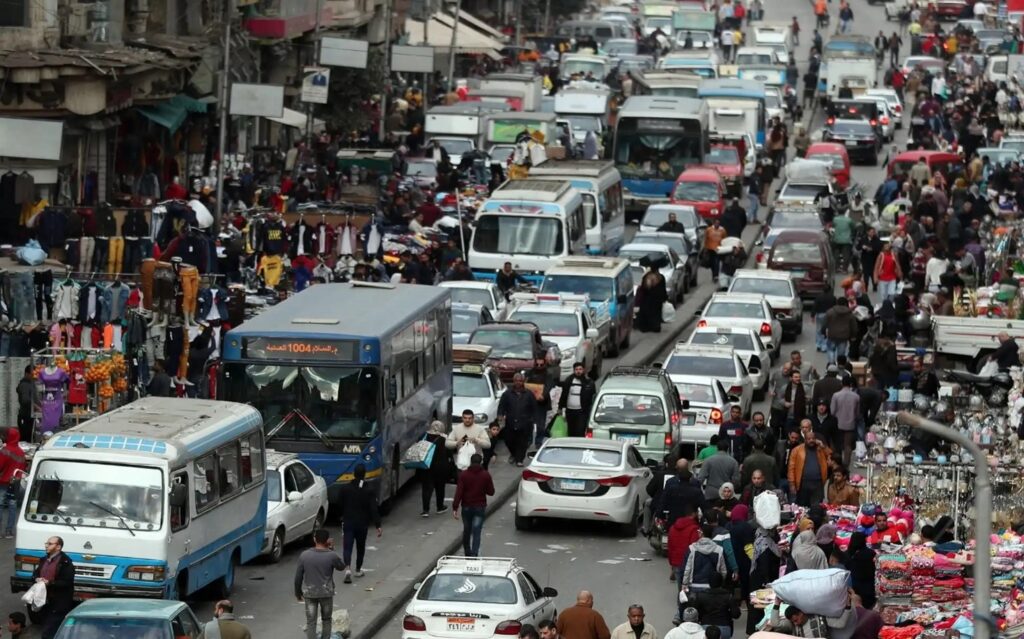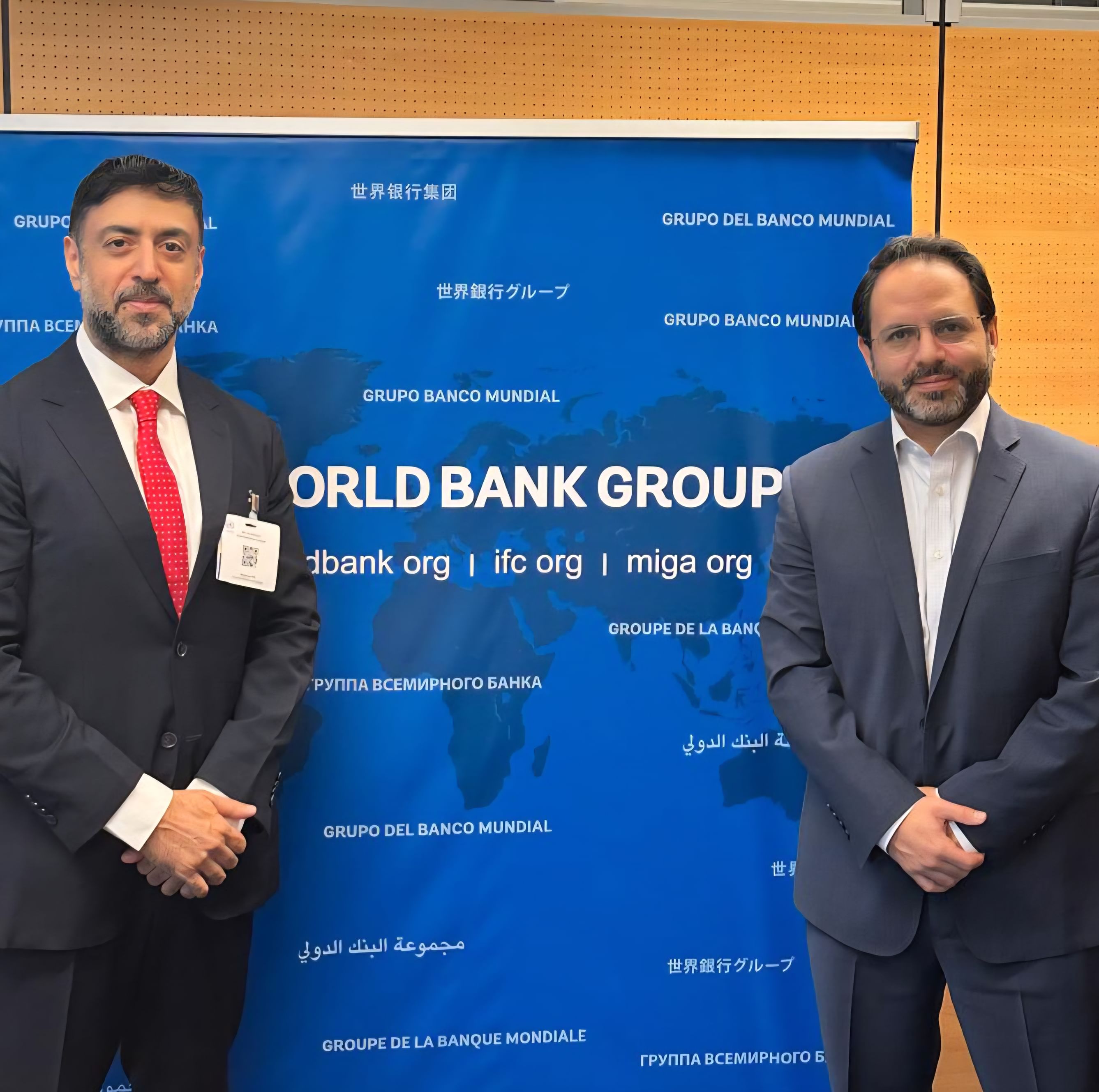Cairo
Source: Al-Wafd newspaper
Prof Dr. Ali Mohammed Al-Khouri
The issue of demographic security is one of the most sensitive and influential issues on the future of development and stability in the Arab world, and it represents a major challenge for decision-makers. This issue is clearly evident in Arab societies, represented by population changes and demographic transformations that directly overlap with economic, social and geopolitical aspects. Some may see these changes through the lens of numerical indicators that show the increase and decrease in population numbers and their distribution, but in reality they carry deep dimensions that go beyond numbers, and affect the way societies develop and organize, forming a basis for understanding and anticipating the future of societies.
According to recent data, the population of Arab countries is about 450 million, with annual growth rates varying between countries, ranging from 0.85% in some countries, such as Tunisia and Morocco, to nearly 3% in others, such as Yemen and Sudan. The Arab region has also witnessed a decline in the average fertility rate to 3.2 children per woman, which is much lower than in previous decades, when fertility rates reached 6 children per woman in some countries. This decline, although it reflects a shift in lifestyles and the culture of societies towards reducing family size, raises new questions about the level of demographic balance required, as declining birth rates will lead to a reduction in the proportion of young people in society and an increase in the proportion of the elderly, and will put increasing pressure on economic and social systems, especially with regard to securing sufficient labor to support economic growth and provide basic services.
The challenges do not stop at declining population growth rates, but extend to include changes in the age structure of the population. With life expectancy rising to 77.5 years, the number of elderly people is increasing significantly, placing increasing burdens on health care systems and pension funds. These shifts herald the emergence of economic and social gaps that may have repercussions on the state’s ability to achieve sustainable development and ensure internal stability for society.
At the same time, the geographical distribution of the population highlights a clear disparity between urban and rural areas. About 60% of the population lives in large cities, where job opportunities and basic services are concentrated, while rural areas suffer from a lack of infrastructure and services. This disparity encourages internal migration from rural to urban areas, increases pressure on cities and exacerbates development challenges, while rural areas remain unable to fully benefit from their human and natural resources.
In the face of these challenges, it becomes necessary to review development and demographic policies in a comprehensive and strategic manner. Demographic transformations can be benefited from if they are treated as opportunities to support sustainable development. Investing in education and vocational training is a cornerstone in addressing the challenges related to the labor force. By qualifying young people to meet the needs of the changing labor market, Arab countries can raise the level of economic productivity and reduce the need for foreign labor.
On the other hand, health policies should take a proactive approach to dealing with population aging. Investing in innovative health care services, such as home care and AI technologies to improve the efficiency of diagnosis and treatment, can ease the burden on the health system and ensure a better quality of life for the elderly.
The challenges facing demographic security are not just a local dilemma, but an issue with regional and global dimensions. Cooperation among Arab countries to exchange expertise and best practices is a necessary step to confront these transformations and deal with them collectively, and partnerships with international organizations can provide technical and financial support for development projects that aim to address these issues.
Overall, what should be seen is that demographic security is a strategic element in formulating national policies. Arab countries as a whole will face a demographic crisis, but this may represent an opportunity to reshape development priorities on more comprehensive and sustainable foundations. In a world whose equations are changing rapidly, long-term planning based on forward-looking visions of demographic changes remains the key to dealing with these challenges and transforming them into real opportunities for the advancement of societies.












